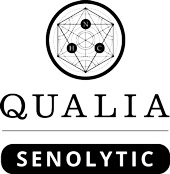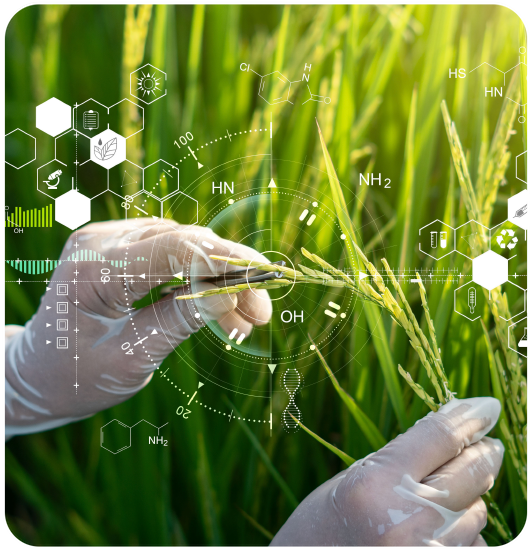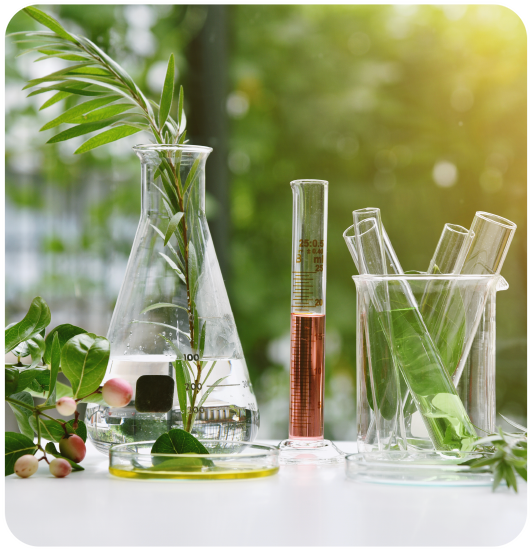

Better Aging
Is Here
The New Science
Of Longevity
Over 30? Age On Your Terms.
• Helps naturally eliminate senescent cells.
• Only needs to be taken 2 days a month.
• Turn back the clock on your aging symptoms.
WHY QUALIA SENOLYTIC
Understanding
How We Age

Senolytic Ingredients
Help ELIMINATE Senescent Cells
Senolytic ingredients are the biggest discovery in aging
science of the last decade, but very few people have started
taking advantage of this medical breakthrough.

Your happiness is guaranteed.
If you do not love Qualia for any reason, simply get in touch via phone or email and let us know you’d like a refund. More on our 100-day guarantee here.
Health And Fitness
Leaders Who Love
Qualia
Qualia products are used and loved by some
of today's brightest minds in business, sport,
and personal wellness.
Reviews
References
1. Y. Zhu et al., Aging Cell. 14, 644–658 (2015).
2. A. Riva, M. Ronchi, G. Petrangolini, S. Bosisio, P. Allegrini, Eur. J. Drug Metab. Pharmacokinet. 44, 169–177 (2019).
3. M. J. Yousefzadeh et al., EBioMedicine. 36, 18–28 (2018).
4. S. Romashkan, H. Chang, E. C. Hadley, J. Gerontol. A Biol. Sci. Med. Sci. 76, 1144–1152 (2021).
5. H. M. Awad et al., Chem. Res. Toxicol. 14, 398–408 (2001).
6. Q. Jiang et al., Curr. Pharm. Biotechnol. 19, 428–437 (2018).
7. X. Lu, Y. Li, X. Li, H. A. Aisa, Oncol. Lett. 14, 1993–2000 (2017).
8. S. Verma et al., J. Recept. Signal Transduct. Res. 37, 391–400 (2017).
9. S. Dirimanov, P. Högger, Biomolecules. 9 (2019), doi:10.3390/biom9060219.
10. J. Fu et al., PLoS One. 7, e49194 (2012).
11. A. Kim, J.-M. Yun, J. Med. Food. 20, 782–789 (2017).
12. M. Hytti et al., J. Nutr. Biochem. 42, 37–42 (2017).
13. K. Sak, K. Kasemaa, H. Everaus, Food Funct. 7, 3815–3824 (2016).
14. H. Cherif et al., J. Clin. Med. Res. 8 (2019), doi:10.3390/jcm8040433.
15. S. Pirmoradi, E. Fathi, R. Farahzadi, Y. Pilehvar-Soltanahmadi, N. Zarghami, Drug Res. . 68, 213–221 (2018).
16. H. Jin et al., Cell. Signal. 33, 79–85 (2017).
17. S. Prasad, B. B. Aggarwal, in Herbal Medicine: Biomolecular and Clinical Aspects, I. F. F. Benzie, S. Wachtel-Galor, Eds. (CRC Press/Taylor & Francis, Boca Raton (FL), 2012; https://www.ncbi.nlm.nih.gov/pubmed/22593922).
18. E. Mutlu Altundağ et al., Nutr. Cancer. 73, 703–712 (2021).
19. N. S. Srivastava, R. A. K. Srivastava, Phytomedicine. 52, 117–128 (2019).
20. M. M. Abdel-Diam et al., Environ. Sci. Pollut. Res. Int. 26, 3659–3665 (2019).
21. S. Kundur et al., J. Cell. Physiol. 234, 11103–11118 (2019).
22. E. Mutlu Altundağ, A. M. Yılmaz, S. Koçtürk, Y. Taga, A. S. Yalçın, Nutr. Cancer. 70, 97–108 (2018).
23. G. H. Heeba, M. E. Mahmoud, A. A. El Hanafy, Toxicol. Ind. Health. 30, 551–560 (2014).
24. A. Montgomery, T. Adeyeni, K. San, R. M. Heuertz, U. R. Ezekiel, J. Cancer. 7, 1250–1257 (2016).
25. V. Alfonso-Moreno, A. López-Serrano, E. Moreno-Osset, Rev. Esp. Enferm. Dig. 109, 875 (2017).
26. S. Dalimi-Asl, H. Babaahmadi-Rezaei, G. Mohammadzadeh, Iran. J. Med. Sci. 45, 477–484 (2020).
27. S. O. Ali, H. A. Darwish, N. A. Ismail, Basic Clin. Pharmacol. Toxicol. 118, 369–380 (2016).
28. M. Nasiri et al., Asian Pac. J. Cancer Prev. 14, 3449–3453 (2013).
29. N. Abdel-Magied, A. A. Elkady, Exp. Mol. Pathol. 111, 104299 (2019).
30. H. Avci et al., Exp. Toxicol. Pathol. 69, 317–327 (2017).
31. V. S. Gota et al., J. Agric. Food Chem. 58, 2095–2099 (2010).
32. Y. Wang et al., Aging . 8, 2915–2926 (2016).
33. X. Zhang et al., Aging Cell. 17, e12780 (2018).
34. X. Liu et al., Bioorg. Med. Chem. 26, 3925–3938 (2018).
35. L. O. Afolabi, J. Bi, L. Chen, X. Wan, Int. Immunopharmacol. 96, 107658 (2021).
36. R. W. Morton, D. A. Traylor, P. J. M. Weijs, S. M. Phillips, Curr. Opin. Crit. Care. 24, 124–130 (2018).
37. C. M. Dungan et al., Geroscience (2022), doi:10.1007/s11357-022-00542-2.
38. Y. Saito, T. S. Chikenji, T. Matsumura, M. Nakano, M. Fujimiya, Nat. Commun. 11, 889 (2020).
39. C. Yang et al., Aging . 10, 1356–1365 (2018).
40. Y. Saito, T. S. Chikenji, Front. Pharmacol. 12, 739510 (2021).
41. T. X. Y. Lee et al., Aging . 13, 16567–16576 (2021).
42. J. Wu et al., J. Ginseng Res. 43, 580–588 (2019).
43. C.-W. Hou et al., PLoS One. 10, e0116387 (2015).
44. J. Wu et al., J. Funct. Foods. 58, 27–33 (2019).
45. J. Wu et al., Aging . 12, 20226–20234 (2020).
46. C. Petrella et al., Curr. Med. Chem. 28, 7595–7613 (2021).
47. A. Medina-Remón et al., Br. J. Clin. Pharmacol. 83, 114–128 (2017).
48. M. Finicelli, T. Squillaro, U. Galderisi, G. Peluso, Nutrients. 13 (2021), doi:10.3390/nu13113831.
49. A. Mehmood, M. Usman, P. Patil, L. Zhao, C. Wang, Food Sci Nutr. 8, 4639–4655 (2020).
50. A. Romani et al., Nutrients. 11 (2019), doi:10.3390/nu11081776.
51. B. Barbaro et al., Int. J. Mol. Sci. 15, 18508–18524 (2014).
52. B. Klimova, M. Novotný, K. Kuca, M. Valis, Neuropsychiatr. Dis. Treat. 15, 3033–3040 (2019).
53. M. Varela-Eirín et al., Aging . 12, 15882–15905 (2020).
54. H. Thoppil, K. Riabowol, Front Cell Dev Biol. 7, 367 (2019).
55. M. Amaya-Montoya, A. Pérez-Londoño, V. Guatibonza-García, A. Vargas-Villanueva, C. O. Mendivil, Adv. Ther. 37, 1407–1424 (2020).
56. C. Kang, Mol. Cells. 42, 821–827 (2019).
57. J. Birch, J. Gil, Genes Dev. 34, 1565–1576 (2020).
58. L. Zhang, L. E. Pitcher, V. Prahalad, L. J. Niedernhofer, P. D. Robbins, FEBS J. (2022), doi:10.1111/febs.16350.
59. B. Menicacci, C. Cipriani, F. Margheri, A. Mocali, L. Giovannelli, Int. J. Mol. Sci. 18 (2017), doi:10.3390/ijms18112275.
60. M. Malavolta et al., Mediators Inflamm. 2018, 4159013 (2018).
61. A. Al Mamun et al., Eur. J. Pharmacol., 174991 (2022).
62. L. J. Hickson et al., EBioMedicine. 47, 446–456 (2019).
63. S. M. Woo, K.-J. Min, I. G. Chae, K.-S. Chun, T. K. Kwon, Mol. Carcinog. 54, 216–228 (2015).
64. G. Deep, S. C. Gangar, C. Agarwal, R. Agarwal, Cancer Prev. Res. . 4, 1222–1232 (2011).
65. H. Zhao, G. E. Brandt, L. Galam, R. L. Matts, B. S. J. Blagg, Bioorg. Med. Chem. Lett. 21, 2659–2664 (2011).
66. E. Cuyàs et al., Food Chem. Toxicol. 132, 110645 (2019).
67. G. Rizzo, L. Baroni, Nutrients. 10 (2018), doi:10.3390/nu10010043.
68. D. Kusumoto et al., Nat. Commun. 12, 257 (2021).
69. M. K. Sundaram et al., Anticancer Agents Med. Chem. 18, 412–421 (2018).
70. I. A. M. Groh, C. Chen, C. Lüske, A. T. Cartus, M. Esselen, J. Nutr. Metab. 2013, 821082 (2013).
71. E. P. Feener, J. M. Northrup, L. P. Aiello, G. L. King, J. Clin. Invest. 95, 1353–1362 (1995).
72. J. Lee, J. Ju, S. Park, S. J. Hong, S. Yoon, Nutr. Cancer. 64, 153–162 (2012).
73. G. Xie et al., J. Invest. Dermatol. 137, 1731–1739 (2017).











 Clinically Tested Formula*
Clinically Tested Formula*























